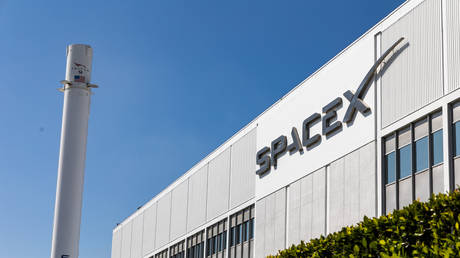The rise of the CTO in the age of ‘business unusual’

Years ago, I spent a lot of time making the case for why IT mattered in large enterprises. It’s fair to say the landscape has changed—dramatically.
Where I once had to argue for IT’s strategic importance, I now find myself doing the opposite—pushing back on the exuberant view that technology alone can fix everything from poorly designed processes to unclear roles and responsibilities.
After decades of serving as essential—but often background—enablers of enterprise strategy, technologists and our alphabet soup of leadership titles (CIOs, CDTOs, CDOs, CTOs) are now at the center of business transformation. In more than 30 years in this industry, I’ve never witnessed IT play such a central role in shaping business dynamics. With the tailwind of generative AI and automated code completion, technology teams are now leading what can only be described as “business as unusual”—creating previously unimaginable products, services, business models, customer and partner relationships, and employee experiences. Today, tech strategy is business strategy.
The Great Unbundling Begins
The traditional way we think about enterprise software is being upended. Suddenly, it’s both cool and affordable to build genuinely useful things. For decades, CIOs were forced to manage constant trade-offs: lower total cost of ownership versus future-proofing, slick user interfaces versus seamless integration, best-of-breed solutions versus end-to-end platforms, on-premises versus cloud. The market subsequently converged to the point where most companies now run virtually identical application stacks.
And yet, despite spending tens of millions on carefully crafted user interfaces, most employees still dislike using the enterprise software we provide. They use it because they must, not because they want to.
At their core, most enterprise software platforms aren’t so different from the Excel spreadsheets my brother uses to run his small business—they just come with multimillion-dollar interfaces layered on top. Whether it’s HR systems, data platforms, or CRMs, the underlying logic often mirrors the same basic workflows and decision trees. What sets them apart isn’t complexity—it’s scale, integration capability, and the stakes involved.
To put it more bluntly, all of us are spending enormous sums on the equivalent of a car that boasts luxury exterior finishes but moves you along with the horsepower of a Yugo GV. Regardless of how nice the outside looks, the engine is what actually delivers impact and value.
The AI-Powered Reconstruction
The emergence of agentic AI is fundamentally disrupting how we evaluate enterprise software as an industry. With novel AI frameworks like Model Context Protocol (MCP) and Agent-to-Agent (ATA) protocols, we’re starting to see a future where user interfaces can be disaggregated from the underlying data itself. If AI-based tool calling delivers on its promise, there’s no reason someone shouldn’t be able to change an address, retrieve a paystub, modify a customer order, reset a password, or increase a purchase order—all from the same pane of glass or GenAI prompt bar.
The ability to design this unified interface finally enables meaningful IT differentiation among companies. Until now, enterprise customers had no choice but to purchase software for virtually everything because developing and maintaining applications with exceptional UI, robust databases, and enterprise-grade security was prohibitively costly. With AI, the economics have shifted dramatically—the cost of building something uniquely tailored to our business is plummeting as software learns to write, maintain, and improve itself.
In my field, every pharmaceutical company has historically relied on the same suite of enterprise applications, making differentiation nearly impossible. This raises a fundamental question, especially at this moment of accelerating AI innovation: Should we continue purchasing the costly applications everyone else uses, or should we start building solutions that give us an edge?
AI First
By adopting an AI-first approach, my company has developed an enterprise software catalog that outperforms—and costs less than—anything available for purchase, solving the age-old challenge of data discovery across our corporate systems.
Throughout our organization, even in processes far removed from laboratory work, we’re starting to see how bespoke tools without traditional user interfaces can execute tasks in seconds that previously required 30+ minutes across multiple systems, accelerating how we discover and develop lifesaving medicines.
I’m not suggesting companies should build custom ERP systems or replace every piece of software. Rather, AI and agentic frameworks give us the freedom to assess where real value is being created—which is typically closer to the end user. We can now selectively build applications that directly improve our competitive advantage while continuing to rely on proven solutions for core operational functions.
The Tech Is Changing, and So Is the Talent
With this newfound ability to build transformative solutions, the domain of configuring software, while still crucial, remains a necessary but insufficient skill set. The way we think about talent is fundamentally changing.
By becoming more comfortable building technology—not just buying or configuring it—my organization has doubled in size while significantly reducing its cost to the company. We’re still hungry for more people with the right skills. Fortunately, we’re seeing the next generation of undergraduate and graduate programs blend AI, computer and life sciences, and computational drug discovery and development. The twin torrent of advances in AI and biomedicine is creating rewarding career paths for emerging tech talent—offering purpose, future-shaping potential, and the opportunity to make a uniquely human impact.
It’s a uniquely exciting time to be a technologist in life sciences. In five years, the work we do to benefit patients—the applications and software we create to speed the discovery and delivery of new medicines—will be almost unrecognizable. While change at this pace brings inevitable turbulence, it also expands the role of tech leaders from enablers to architects of enterprise strategy.
The opportunity isn’t just to keep up—it’s to help shape what comes next.
What's Your Reaction?
 Like
0
Like
0
 Dislike
0
Dislike
0
 Love
0
Love
0
 Funny
0
Funny
0
 Angry
0
Angry
0
 Sad
0
Sad
0
 Wow
0
Wow
0



























































































